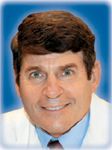Article
Don't let patient no-shows erode your urology practice's revenue
There is a lot we can do to improve our practices' efficiency and productivity. One of the simplest methods is to decrease the no-show rate, a problem that affects most medical practices.

Key Points


In this article, Elizabeth Woodcock, an expert on this topic, explains the financial impact of no-shows and how to minimize them. Woodcock, who is president of Woodcock and Associates in Atlanta, is one of the nation's leading authorities on practice management.
According to Woodcock, each missed appointment costs the practice approximately $140, and that's a conservative estimate based only on the office visit. That amount quadruples-or more-if that missed appointment represents a surgery. If you have multiple no-shows each day, you don't need an MBA to calculate the lost income that can impact your practice. Woodcock estimates that the missed opportunity rate is 7% to 10%.
Fixing problems with scheduling requires a culturual shift, Woodcock says. Instead of focusing on barriers to access-including celebrating when the patient doesn't keep an appointment (said tongue in cheek, but often a reality)-physicians need to motivate staff to keep the schedule completely full. The staff has to understand that open time slots are lost income and that a full, robust schedule improves productivity and profitability. When the staff keeps the schedule full, the physician needs to compliment the entire team and say, "Thank you for giving me a full day."
How to prevent no-shows
No-shows can be prevented. Begin by requesting three phone numbers for each patient: home, work, and cell phone number. If three is too many, ask for the "best" number.
There are automated systems that can be used to contact patients, but these are not as effective as a human being contacting a patient. Also, programs are available that provide patients with an automatic text message to remind them of their appointment. Increasingly, practices are taking advantage of reminding patients through an automated, text-based service.
Studies demonstrate that longer time intervals between appointments significantly increase the no-show rate. For example, patients who are given an appointment more than 150 days after their last appointment may have a significantly higher no-show rate-as much as 30%. In another study in which patients who had an appointment within 10 days of their last office visit, the no-show rate was less than 5%. Woodcock suggests that you target patients who are likely to miss their appointments with a "warm" confirmation. Such patients include those who have been given an appointment in excess of 150 days, those who previously have canceled appointments, those who are scheduled for a procedure, new patients, or certain demographics or payer types who have a history of not keeping appointments.
Another option for reducing the no-show rate is to consider accepting electronic appointment requests. There are programs on many practice management systems that allow patients to request an appointment, after which you contact them to confirm a date and a time.
Make it easy for a patient to cancel an appointment, Woodcock advises, noting that it's difficult for patients to cancel in most practices. If a patient cancels an appointment, be sure to follow up and give him an opportunity to reschedule. Also, let the patient know that you appreciate the notification about the cancellation.
Another effective method of reducing the no-show rate and keeping the schedule full is to maintain a list of patients who would like an earlier appointment. Consequently, when openings occur, the scheduler or receptionist can go to the waiting list and contact patients who could potentially fill those open slots.
Of course, it is necessary to carefully document all no-shows in the patient's chart or electronic medical record. Woodcock cautions that no-shows are a significant liability for the practice, and consulting with your malpractice carrier about protocols is recommended.

















